Home buyers who use a VA loan to buy a house enjoy many VA home loan benefits, including the ability to finance the total purchase price. That’s why hundreds of thousands of military members and veterans use VA loans every year.
But there’s another significant benefit that many eligible borrowers don’t even know about. The VA loan program also allows you to avoid paying VA loan mortgage insurance, which could save you hundreds of dollars per month.
In this guide, you’ll learn what mortgage insurance is, why it’s required for some loans, and how you can avoid paying it by using a VA home loan.
How the VA Loan Program Works

A VA loan is like any other type of residential mortgage loan, but with one significant difference. They receive a government guarantee that gives the mortgage lender an added layer of protection. Along with the FHA mortgage insurance program, VA loans are a type of government-backed mortgage.
In short, if a homeowner with a VA loan defaults or fails to repay the debt, the government will reimburse the lender for some of their financial losses.
Because of this government guarantee, mortgage lenders that offer VA loans can also relax their qualification criteria for borrowers. VA-backed home loans tend to be more forgiving when it comes to credit blemishes and other past financial issues.
This added layer of protection also allows borrowers to avoid the added cost of mortgage insurance, even if they make little to no down payment.
As a home buyer utilizing a VA loan, you’ll have limited interaction with the Department of Veterans Affairs. You’ll be applying for a VA loan through a private-sector mortgage lender, and they’ll serve as your primary point of contact. But you can still benefit from the government’s involvement.
Benefits of VA Loans
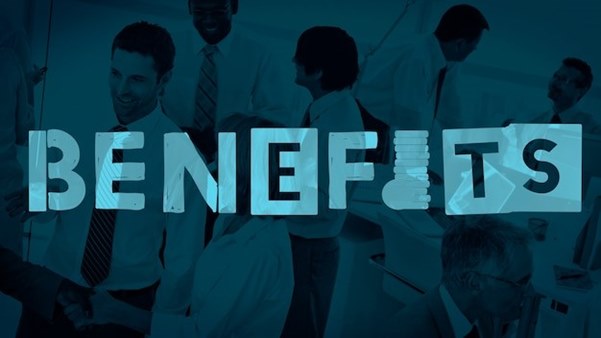
Here are some of the benefits of using a VA loan:
1. Zero Down Payment: Having the option to buy a house with no down payment is one of the most enormous benefits of a VA loan. Because of this feature, homeownership is now more accessible since borrowers do not need to collect significant resources for a down payment.
2. No Mortgage Insurance: VA loans do not require borrowers to pay for mortgage insurance, in contrast to conventional and FHA loans. Because they may avoid the additional cost of monthly insurance payments, borrowers can save a large amount of money over the course of the loan.
3. Competitive Interest Rates: VA loans frequently have VA loan rates that are more favorable than those of conventional loans, which can save homeowners money over the long run by lowering monthly payments.
4. Flexible Credit Criteria: VA loans often have more flexible credit score criteria than regular loans, even if they still exist. Due to this flexibility, VA funding fee can be obtained by borrowers with less-than-perfect credit records.
5. Assistance Programs: The VA provides a number of assistance programs to help borrowers who might have financial issues. These programs offer choices to repayment schedules, loan modifications, and avoiding foreclosure.
What Is Mortgage Insurance?
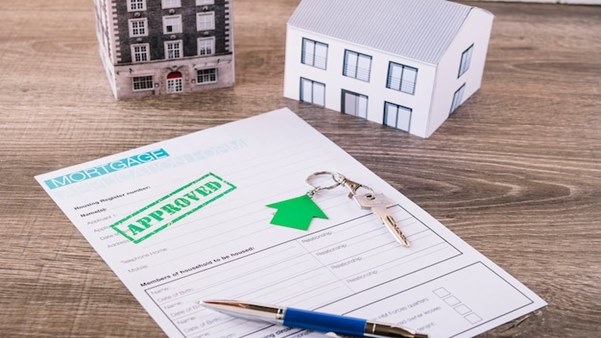
Lenders are protected by mortgage insurance in the event that borrowers default on their loans. It’s typically required when a borrower makes a low down payment on a home loan, increasing the lender’s risk.
There are two types of mortgage insurance:
- Government Mortgage Insurance: This type of insurance is provided by the government rather than by a private insurer. For example, Federal Housing Administration (FHA) loans require mortgage insurance premiums (MIP) for all borrowers who use that program.
- Private Mortgage Insurance (PMI): Similar to government insurance, PMI safeguards the lender in case the borrower fails to repay the loan. But it’s provided by private insurance companies rather than the government. Borrowers who use a conventional (or non-government-backed) home loan with a down payment below 20% typically have to pay for PMI. It’s usually required when the loan-to-value ratio rises above 80%.
Mortgage insurance differs from the other types of insurance you might be familiar with in one crucial way. These policies protect the mortgage lender that issues the loan, but it’s the home buyer/borrower who has to pay for it.
However, private mortgage insurance can benefit buyers as well. Without PMI protection, most home buyers would have to make down payments of 20% or more. However, because of PMI, some conventional home loans allow for a down payment as low as 3%.
Despite this benefit, most home buyers prefer to avoid mortgage insurance at all costs. After all, it can increase the size of your monthly payments and the overall cost of your loan.
How to Avoid Paying It with a VA Loan

The good news for military members and veterans is that the VA home loan program does not require mortgage insurance. It allows you to finance up to 100% of the purchase price—with no down payment whatsoever—while still avoiding mortgage insurance.
Granted, most borrowers who use a VA loan to buy a house have to pay a VA loan funding fee to the Department of Veterans Affairs. But this is a one-time fee that can be rolled into the loan. On the other hand, mortgage insurance is an ongoing expense that sometimes remains in effect for years.
With a regular mortgage loan, borrowers who make a small down payment almost always have to pay for mortgage insurance. But that’s not the case with VA loans.
As it states on the Department of Veterans Affairs website:
“No down payment, no mortgage insurance. These are perhaps the biggest advantages to a VA loan.”
Steps to Utilize a VA Loan
Keep in mind the following points to use a VA loan wisely:
1. Determine Eligibility: Homeowners should first check their eligibility for VA loans subject to the VA’s eligibility guidelines. They could obtain their Certificate of Eligibility (COE) either from the VA or their lender.
2. Find a VA-Approved Lender: VA-approved lenders experienced in handling VA loans will be more than appropriate for the borrowers as they maneuver the process of VA loans. Instead, these lenders will provide the guidance applicants will need to acquire and navigate through the application and approval process of the VA loan.
3. Obtain Pre-approval: Borrowers planning to use a VA loan should seek pre-approval from their chosen lender. Prematch approval proves to sellers that the borrower is a highly serious potential buyer, thus increasing the chances that the borrower will obtain a property of their choice.
4. Shop for Homes: The approval, in principle, will allow the borrowers to buy homes without fearing that they will borrow beyond their budget. VA loans are multifaceted in functionality, i.e., one could use them to finance a single-family home, condominium, or even multi-dwelling units under the VA’s approval.
5. Submit a Purchase Offer: The next step is for the borrowers to find the property that suits them best, and after that, they can submit a buying offer to the seller. Working with a capable real estate agent will help negotiate and make sure that the purchase offer complies with VA loan rate.
6. Undergo Appraisal and Inspection: By conducting an appraisal, which is part of the VA loan procedure, the property’s value would be assessed to make sure it fulfills VA’s minimal housing requirements. Furthermore, the government advises borrowers to conduct home inspections as a way to identify any problems in the home.
7. Finalize Loan Approval: Once the appraisal and inspection are completed, the lender will carry out the final stages of the loan process by making sure that all the required documents are in order. In case of their approval, borrowers can go ahead and start closing their deals, ultimately becoming homeowners.
You Could Save Hundreds of Dollars per Month
The best way to understand this unique benefit is to plug in realistic numbers.
For a conventional or “regular” home loan, private VA loan mortgage rates typically range from 0.5% to 1.5% of the base loan amount. This annual cost gets divided over 12 monthly payments and tacked onto the mortgage payment.
Based on the current average home price in the U.S., the cost of PMI could range from $144 to $434 per month. So, by avoiding private mortgage insurance, a borrower could save hundreds of dollars compared to if they had to pay it.
FHA mortgage insurance can add up as well. In fact, borrowers who use an FHA loan to buy a house typically have to pay two mortgage insurance premiums. There’s a one-time upfront premium of 1.75% of the loan amount, along with a recurring annual premium that amounts to 0.55% for most borrowers.
The ability to buy a home with no down payment is arguably the most significant benefit offered by a VA loan. But that only scratches the surface. By avoiding mortgage insurance, borrowers could also save hundreds of dollars per month in their housing costs.


 How to Buy a Condo Unit with a VA Mortgage Loan
How to Buy a Condo Unit with a VA Mortgage Loan 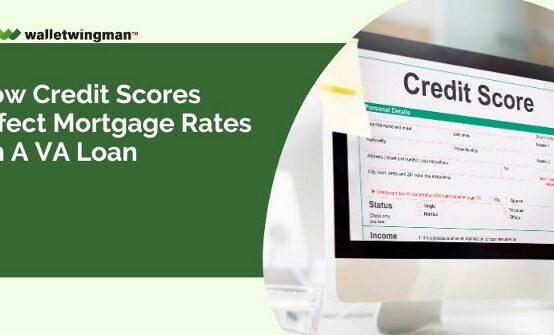 How Credit Scores Affect Mortgage Rates on a VA Loan
How Credit Scores Affect Mortgage Rates on a VA Loan 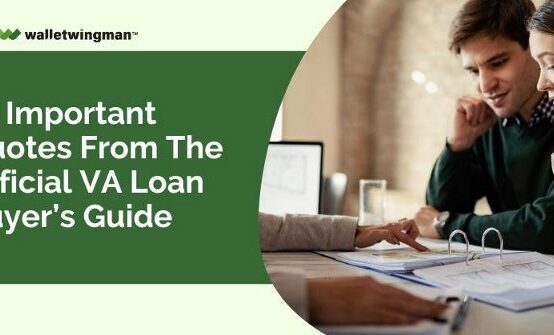 10 Important Quotes from the Official VA Loan Buyer’s Guide
10 Important Quotes from the Official VA Loan Buyer’s Guide 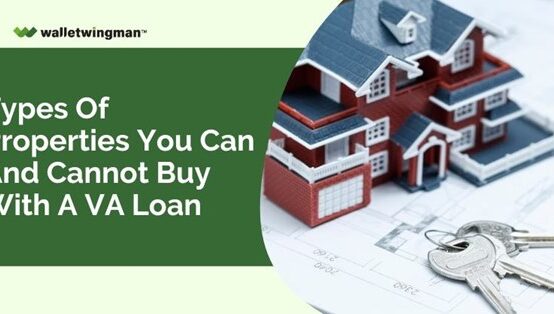 Types of Properties You Can and Cannot Buy With a VA Loan
Types of Properties You Can and Cannot Buy With a VA Loan 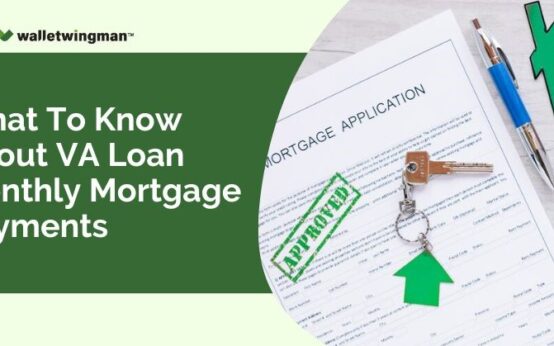 What To Know About VA Loan Monthly Mortgage Payments
What To Know About VA Loan Monthly Mortgage Payments  Using A VA Loan In A Seller’s Market: Considerations And Strategies
Using A VA Loan In A Seller’s Market: Considerations And Strategies 